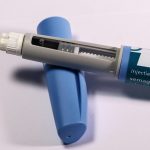Polyamide itself doesn’t naturally contain PFAS, but manufacturers often add these “forever chemicals” to make polyamide products water, stain, and oil-resistant. PFAS are persistent in the environment and linked to serious health risks like hormone disruption and cancer. Because of their durability, these chemicals don’t break down easily, raising concerns about contamination and safety. If you want to understand how PFAS affect polyamide products and what alternatives exist, there’s more to explore.
Table of Contents
Key Takeaways
- Polyamide itself does not inherently contain PFAS but can be treated with PFAS-based coatings for water and stain resistance.
- PFAS are often added as surface treatments or incorporated into fibers in polyamide textiles to enhance performance.
- Regulatory standards increasingly restrict PFAS use in textiles, including polyamide products, requiring disclosure and testing.
- PFAS-treated polyamide poses environmental and health risks due to PFAS persistence and bioaccumulation.
- PFAS-free alternatives exist for polyamide, such as silicone or bio-based water repellents, recommended for safer consumer choices.
What Are PFAS and Why Are They Called “Forever Chemicals”?
Although you mightn’t have heard of PFAS before, these chemicals have become a major concern because they resist breaking down in the environment.
PFAS chemicals are a growing worry due to their stubborn resistance to environmental breakdown.
You should know that PFAS stands for per- and polyfluoroalkyl substances, a large group of man-made chemicals used since the 1940s.
What makes PFAS unique is their strong carbon-fluorine bonds, which prevent them from degrading naturally. Because of this, they can persist in soil, water, and even your body for years—earning them the nickname “forever chemicals.”
You’ll find PFAS in many consumer products, and their persistence raises worries about potential health risks.
Understanding what PFAS are and why they don’t break down helps you grasp why scientists and regulators are closely monitoring their impact.
Common Uses and Properties of Polyamide
Polyamide, commonly known as nylon, stands out for its strength, durability, and versatility. You’ll find it in everyday items like clothing, carpets, and industrial components because it resists wear and tear well.
Its lightweight nature and resistance to chemicals make it ideal for automotive parts and electrical equipment. Polyamide’s moisture-wicking properties also make it popular in sportswear, keeping you comfortable during physical activities.
Additionally, it’s used in fishing lines and parachutes due to its high tensile strength and elasticity. You can rely on polyamide for products requiring toughness and flexibility, as it withstands heat and abrasion better than many other plastics.
Understanding these traits helps you appreciate why polyamide is so widely used across various industries.
How PFAS Are Typically Introduced Into Materials
When manufacturers want to enhance materials with water, stain, or oil resistance, they often introduce PFAS during production. You’ll find PFAS added as surface treatments, coatings, or incorporated into fibers to improve durability. These chemicals can bond at a molecular level, making the materials repel liquids and resist stains effectively. Here’s how PFAS typically enter materials:
| Method | Description |
|---|---|
| Surface Coatings | Applied post-production for repellency |
| Fiber Treatment | Integrated during fiber spinning |
| Resin Additives | Mixed into polymer formulations |
| Emulsions | Used in finishing treatments |
| Impregnation | Soaking materials in PFAS solutions |
Understanding these methods helps you grasp why PFAS presence can be widespread and persistent in treated goods.
The Relationship Between Polyamide and PFAS in Manufacturing
Because you often want durable, flexible fabrics, polyamide plays a key role in manufacturing water- and stain-resistant materials.
To achieve these qualities, manufacturers sometimes apply PFAS-based treatments, known for their ability to repel water and oils effectively. While polyamide itself doesn’t inherently contain PFAS, the finishing processes can introduce these chemicals to enhance performance.
Manufacturers may add PFAS treatments to polyamide fabrics to boost water and oil repellency.
You’ll find that PFAS coatings create a protective barrier on polyamide fibers, improving resistance to stains and moisture. However, these treatments can vary widely depending on the product and manufacturer.
Understanding this relationship helps you recognize that polyamide’s base structure is distinct from PFAS, but the chemicals can be added later in production to meet specific functional demands.
This distinction is vital when evaluating materials for safety and environmental impact.
Potential Health Risks Associated With PFAS Exposure
You mightn’t realize how easily PFAS can enter your body through water, food, or even the air you breathe.
These chemicals are linked to serious health issues, including hormone disruption and increased cancer risk.
Understanding these exposure routes and long-term effects is key to protecting your health.
Toxicity and Health Effects
Although PFAS have been widely used for decades, researchers are only now uncovering the serious health risks they pose. When you come into contact with PFAS, these chemicals can accumulate in your body over time, potentially leading to harmful effects.
Studies link PFAS exposure to issues like immune system suppression, hormone disruption, and increased risk of certain cancers, including kidney and testicular cancer. You might also experience developmental problems if exposed during pregnancy.
Additionally, PFAS have been associated with liver damage and elevated cholesterol levels. Because these chemicals persist in your body and the environment, the health effects can be long-lasting.
Understanding PFAS toxicity helps you make informed choices about products and environments where these “forever chemicals” might be present, protecting your health in the long run.
Exposure Routes and Sources
Several common sources expose you to PFAS daily, often without your knowledge. These “forever chemicals” are found in non-stick cookware, water-repellent fabrics like polyamide, food packaging, and even some cosmetics.
When you use these products, small amounts of PFAS can migrate into your body through skin contact, inhalation, or ingestion. Drinking contaminated water is another significant route, especially near industrial sites or areas with PFAS-contaminated groundwater.
Additionally, you might ingest PFAS through certain foods, especially fish and meat from animals exposed to these chemicals. Understanding these exposure routes helps you identify and limit your contact with PFAS.
While you can’t avoid them entirely, being aware of where PFAS lurk empowers you to make safer choices daily.
Long-Term Health Implications
Because PFAS chemicals persist in the environment and accumulate in the human body over time, they pose serious long-term health risks.
When you’re exposed to PFAS, whether through contaminated water, food, or products like certain polyamides, these chemicals can interfere with your hormone functions. This disruption may lead to issues such as thyroid disease, immune system weaknesses, and developmental problems in children.
You might also face increased risks of certain cancers, including kidney and testicular cancer. Additionally, PFAS exposure has been linked to elevated cholesterol levels and liver damage.
Since these chemicals don’t break down easily, avoiding exposure is essential. Understanding these risks helps you make informed choices about the products you use and the environment you protect, ultimately safeguarding your long-term health.
Environmental Impact of PFAS Contamination
You need to understand how PFAS stubbornly stick around in the environment, making cleanup tough.
These chemicals can harm wildlife by disrupting their health and ecosystems.
Let’s explore how this persistence affects the natural world around you.
PFAS Persistence in Ecosystems
Although PFAS compounds have provided valuable industrial benefits, they resist natural breakdown processes and linger in ecosystems for decades.
When these chemicals enter soil, water, or air, they don’t simply disappear. Instead, they accumulate, moving through food chains and contaminating water supplies.
You should know that PFAS bind tightly to particles in soil and sediment, making cleanup difficult. Rainfall and runoff can spread PFAS far from their original source, affecting distant environments.
Because they persist, PFAS can build up over time, leading to widespread environmental contamination. Understanding this persistence helps you grasp why reducing PFAS use and preventing their release is essential for protecting ecosystems and human health in the long term.
Effects on Wildlife Health
When PFAS contaminate an environment, they don’t just stay in the soil or water—they enter the bodies of wildlife, causing harm that can affect entire populations.
You should know that these chemicals accumulate in animals, disrupting hormone functions, immune responses, and reproduction. For example, PFAS exposure can reduce fertility in fish and birds, making it harder for populations to sustain themselves.
You might also see weakened immune systems, leaving animals more vulnerable to diseases. As these chemicals build up, predators higher in the food chain, including mammals and birds of prey, can suffer even greater effects.
Regulatory Standards and Testing for PFAS in Textiles
Since PFAS chemicals pose significant health and environmental risks, regulatory agencies worldwide have tightened standards for their presence in textiles. You need to stay informed about these evolving rules to guarantee compliance and safety.
Testing methods have become more sophisticated, allowing for precise detection of PFAS in fabrics like polyamide. Here’s what you should know:
- Limits on PFAS concentrations vary by region and product type
- Mandatory disclosure of PFAS use in manufacturing processes
- Standardized testing protocols such as EPA Method 533 and ISO 21675
- Increased frequency of random product testing and certification
- Penalties and recalls for non-compliance with PFAS regulations
Understanding these standards helps you make safer choices and hold manufacturers accountable for chemical use.
Alternatives to PFAS-Containing Treatments in Polyamide Products
As regulations tighten around PFAS in textiles, finding effective alternatives for polyamide products becomes more important than ever.
You can explore fluorine-free water repellents made from silicone or wax-based compounds, which provide good durability without harmful chemicals.
Bio-based treatments derived from natural oils or plant extracts also offer eco-friendly options, giving your polyamide fabrics water resistance while reducing environmental impact.
Additionally, some manufacturers use novel polymer coatings designed to mimic PFAS performance but break down more easily, minimizing persistence in the environment.
When selecting treatments, look for certifications or test results confirming the absence of PFAS.
How Consumers Can Identify and Avoid PFAS in Polyamide Goods
Although PFAS chemicals can be hidden in many polyamide products, you can take simple steps to spot and avoid them.
Start by checking product labels and descriptions for terms like “water-repellent” or “stain-resistant,” as these often hint at PFAS use. Look for brands committed to PFAS-free materials or certifications.
You can also research product reviews and third-party tests that reveal chemical contents. When in doubt, reach out directly to manufacturers for transparency.
Finally, consider opting for natural fibers or PFAS-free alternatives.
- Read labels carefully for PFAS-related keywords
- Choose brands with clear PFAS-free policies
- Review independent testing results online
- Contact manufacturers for ingredient details
- Prefer natural or certified PFAS-free fabrics
These actions help you make safer choices.
Frequently Asked Questions
How Does the Cost of Pfas-Free Polyamide Compare to Traditional Options?
You’ll find PFAS-free polyamide costs more than traditional options due to specialized manufacturing and limited supply. However, investing in it supports safer, eco-friendly products and reduces long-term environmental and health risks.
Can PFAS in Polyamide Degrade Under Normal Environmental Conditions?
You might think PFAS in polyamide would vanish overnight, but nope! These “forever chemicals” stubbornly resist breaking down under normal conditions. So, don’t expect them to disappear anytime soon—they’re in it for the long haul.
Are PFAS Chemicals Detectable in Polyamide Using Home Testing Kits?
You can’t reliably detect PFAS in polyamide with home testing kits since they require specialized lab equipment. For accurate results, you’ll need to send samples to a certified lab that uses advanced analytical methods.
Do Pfas-Free Polyamide Products Have Different Durability or Performance?
You’ll find PFAS-free polyamide products often maintain strong durability and performance, but they might lack certain water or stain resistance compared to PFAS-treated ones. It’s about balancing eco-friendliness with specific functional needs.
What Industries Are Leading Efforts to Eliminate PFAS From Polyamide Production?
You’ll find the textile, automotive, and electronics industries leading efforts to eliminate PFAS from polyamide production. They’re pushing for safer alternatives to reduce environmental impact while maintaining product quality and performance standards.
- Does Chiffon Fabric Stink - July 15, 2025
- Does Chiffon Fabric Affect the Economy - July 15, 2025
- Does Cotton Fabric Have a Nap - July 15, 2025







